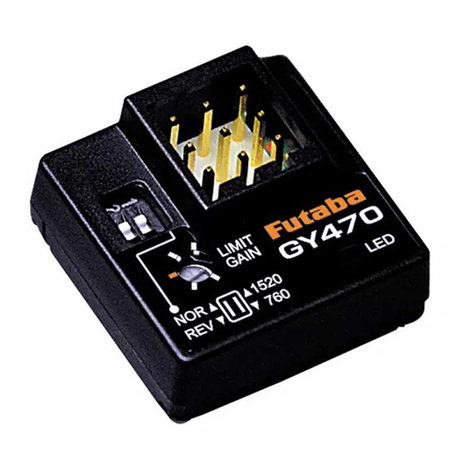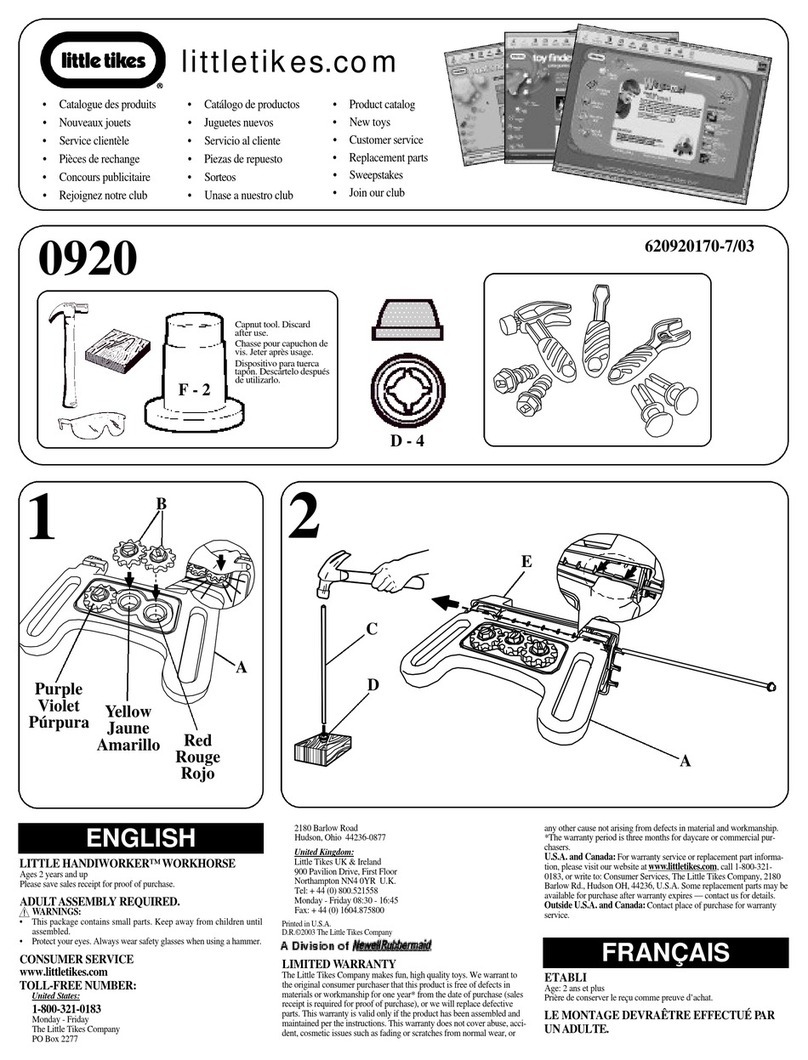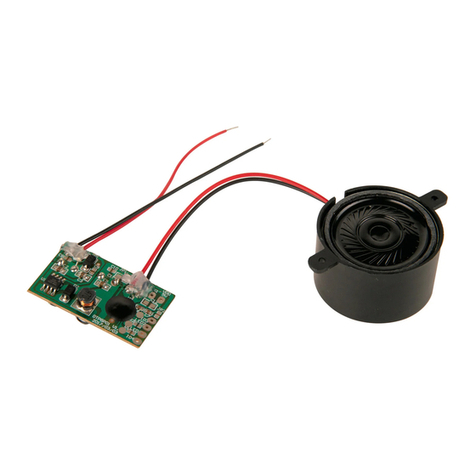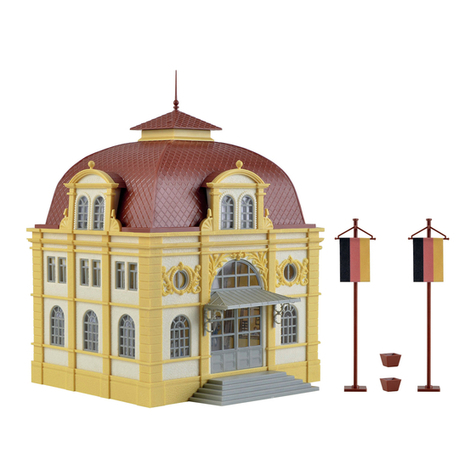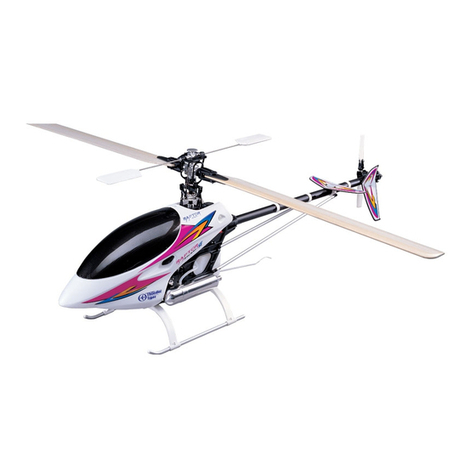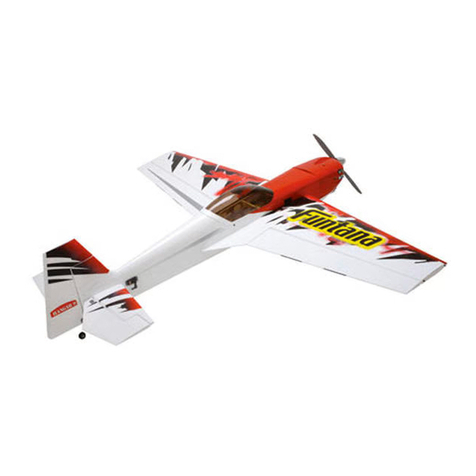When you are flying in the same room as others, The first user to start
up his airplane should use channel 2 or 3, and the second user can
use channel 1. Therefore up to three people can fly in the same room
simultaneously. The first person should use CH 3, the second should
use CH2 and the third person should use CH1. All three channels can
be used together without risk of interference from the others. If the 3
people flying in the same room are aware of what channel they are
using, they will be able to allow a new flyer to join in, so long as the
new user can select a lower channel number than what is currently
being used. If you are flying with your friends, put the longest flying
airplane on CH 3, and then let the other airplanes use the lower chan-
nels.
For example, if the first user will want to have a long flight, he should
use CH 3. Then if other users want to start up their planes too, they
can use CH 2, and the last guy gets to use CH 1.
If there is going to be a lot of people coming and going, or one user
is using CH 1 and wants to fly for a long time, the other flyers would
obviously not be able to select a channel lower than CH 1. They can
wait for the CH 1 airplane to finish his flight, or they can take their
model into a different room, or move about 100 feet away and try to
sync their receiver to CH 2 or CH 3 - in this way, they are using the
received signal strength to force the receiver to sync to CH 2 or CH 3,
even though a transmitter maybe be transmitting on CH 1
Future models of the HFX900 may have more channels (frequencies)
in the 900Mhz ISM band, or may use a frequency hopping technique.
This is not available on the first version of our HFX900 transmitters
and receivers, but we are working on it. For now the 3 channels will
allow most Micro R/C flyers to fly with friends interference free
Transmitter Mixing Modes
There are 4 user-selectable “Mixing Modes” available on the transmit-
ter. (See Fig.7 ) You select your “mixing mode” when you switch
on your transmitter The mixing mode you choose will be saved in
memory until you make another selection - even if you switch it off.
The position of the Right joystick at startup controls what mixing
mode will be selected. The factory default mixing mode is “Normal”
rudder and elevator mixing, this can also be selected at startup by
holding the Right joystick to the right for about 2 seconds.
This is the Mode you want to be in when you want to fly the
Butterfly. (See Fig 8)
When you startup the Transmitter, you can hold the Right joystick to
the left to select “Negative Exponential” mixing that might be useful to
dampen your joystick controls for squirrely models. When you startup
the Transmitter, you can hold the Right joystick down to select “V-
Tail” mixing for elevon style planes “Flight Simulator” mixing mode
is accessed by pushing the Right stick up at startup - which will put
the transmitter in to a non transmitting state that is used only when
we want to connect the transmitter to a personal computer for using
the freeware FMS flight simulator software. Note that the selected
mixing function will remain in memory, even if the transmitter is
switched OFF - This can be convenient, but it can also cause confu-
sion if you forget what mixing mode you are in. So if you use the
non-transmitting FMS function, you’ll have to remember to select
another mixing mode when you want to fly your real airplane - if you
forget to do this, it might seem like your transmitter is not working -
you have to remember what mixing mode you left your transmitter in.
Normal Mixing (Right Stick to Right)
This style of mixing is for 3 channel rudder and elevator. The Left
stick controls the motor throttle. The Right stick controls rudder and
elevator. This Mode is what we use to fly the Butterfly - we
just don’t need the elevator function.
Negative Exponential Rate - (Right Stick to Left)
This makes the control response milder around the joystick center
point, but it becomes increasingly stronger as the input approaches
100%. This can help for taming squirrely models.
V-Tail Mixing - (Right Stick Down)
For models that combine elevator and aileron function on two control
surfaces, like flying wings and V-tail planes.
FMS Mode - Selected at startup (Right Stick Up)
The FMS mode shuts down the radio functions of the transmitter and
instead sends signals through the monophonic audio jack on the left
side of the transmitter box. A special cable connects the transmitter
to a personal computer with the freeware FMS software installed, and
you can use the HFX900 transmitter as an R/C Flight Sim input
device.
5
RIGHT
FULL THROTTLE
ZERO THROTTLE LEFT
Fig 8 . Butterfly Controls are Easy
Use the “Normal” Mixing Mode.
